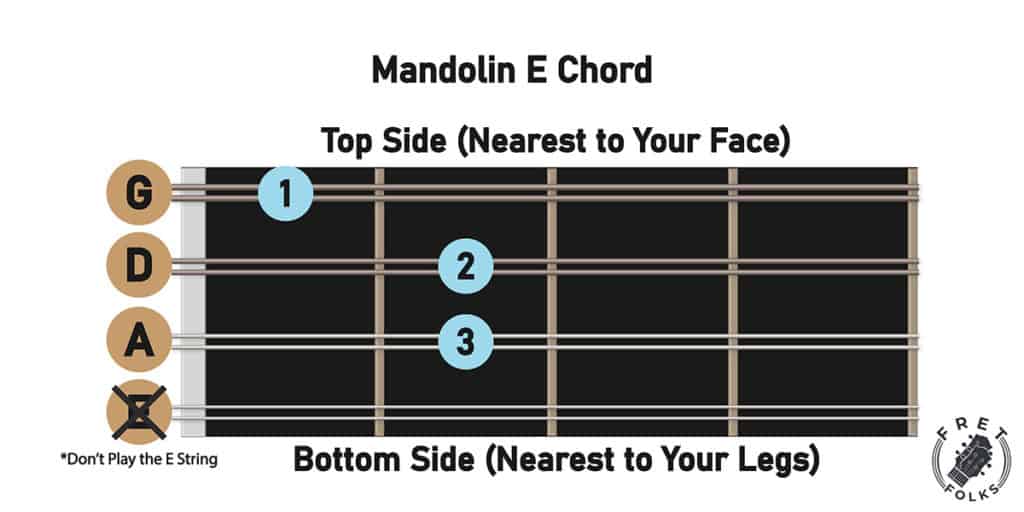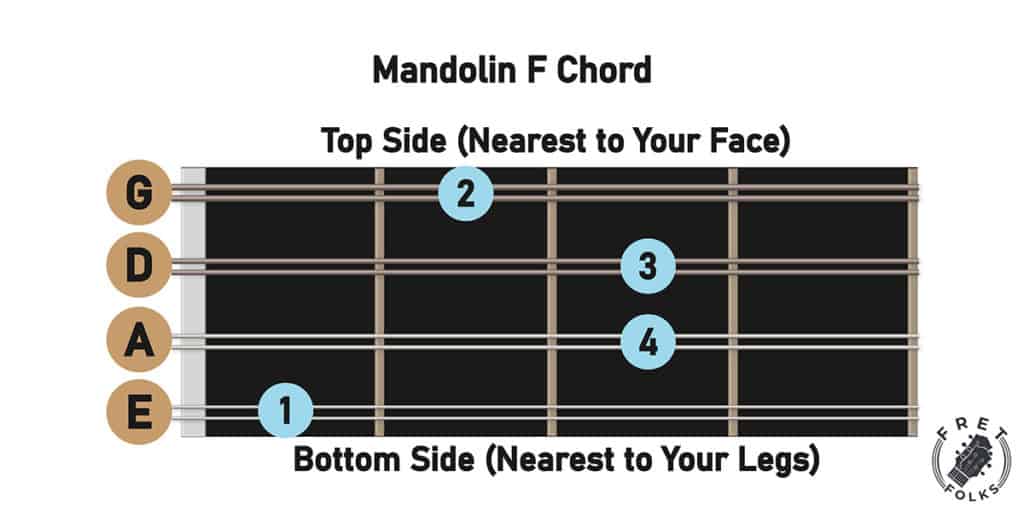As the owner of many different “species” of fretted instruments, I enjoy experimenting with crossover compatibility and seeing if one instrument can be played like another.
Can you play a ukulele like a mandolin? How about playing a mandolin like a ukulele?
Let’s start with a quick summary.
Ukulele and mandolin chords are not the same. Because the instruments are tuned differently, you must fret different string configurations to play the same chords. You can tune a ukulele like a mandolin (gDAE) and a mandolin like a ukulele (GCEA). When tuned similarly, the chords are transferable.
That might seem a little confusing right now, but fear not! Keep reading and I’ll break down the key differences between mandolins and ukuleles. I’ll also show you a cool trick that allows you to tune a ukulele like a mandolin and vice versa.
Let’s dive right in!
4 Differences Between Playing Mandolins and Ukuleles

At first glance, mandolins and ukuleles seem very similar. They are both small (mostly) soprano-voiced fretted instruments. But that’s about where the similarities end.
Ukes and mandos come from two very different instrument families. Mandolins are from the lute family, while ukuleles derive from the plucked lute family, like the guitar.
Mandolins have higher-tension steel strings and are typically played with a hard pick. Ukuleles have soft, lower tension nylon strings and are usually strummed with the fingers.
But the biggest differences relate to the way each instrument is tuned and how this impacts the chord shapes.
Let’s take a closer look at these key differences.
1. String Notes and Tuning
You’ve probably noticed that mandolins have eight strings while ukuleles only have four. This doesn’t always result in different chords, as is the case with 12-string guitars. You fret two strings at once, but the notes are tuned in pairs so the chord shapes are the same as they are on a standard six-string guitar.
However, mandolins are also tuned differently which results in different notes for each string. Mandolins are tuned GG-DD-AA-EE, like a fiddle, but with two strings for each note. Ukuleles, on the other hand, are tuned g-C-E-A.
Because the notes of each string are different (with the exception of the G-string), the chords are played in different configurations, or, shapes.
In order for chord shapes to be similar across stringed instruments, they must be tuned the same. Believe it or not, it is possible to tune a ukulele like a mandolin and vice versa!
Tuning a Ukulele Like a Mandolin
To tune a ukulele like a mandolin, tune the G string as you normally would. Tune the C string up to a D, the E string down to an A, and the A string up to an E. In this tuning, you can play mandolin chord shapes on your ukulele – and experiment with a whole new voice for your instrument!
The G string on your ukulele is tuned an octave higher because most ukuleles use re-entrant tuning. This means you won’t be in a linear tuning as mandolins are.
If you want to tune your uke linearly, you’ll need a special low G set of strings and possibly a deeper nut slot. Check out this article on re-entrant tuning to learn how to do this.
A ukulele tuned GDAE will also sound very different from a mandolin due to its nylon strings, lack of paired strings, and different body.
Check out this video by Liseth Horsten Music to see how to tune a ukulele like a mandolin:
Tuning a Mandolin Like a Ukulele
If you have a mandolin and want to tune it like a ukulele, keep the G strings the same. Tune the D strings down to C’s, the A strings up to E’s, and the E strings down to C’s. You can now play ukulele chord shapes on the mandolin!
This tuning may not be practical as mandolins have thinner necks. Playing some of the chord shapes may be challenging, especially if you have larger fingers.
Because mandolins have steel strings and project more, they will not sound mellow like a ukulele. However, you will have a whole new instrument voice to play with!
This video shows you how to tune your mandolin like a ukulele:
2. Chord Shapes and Difficulty
Due to the different string notes, mandolin chord shapes are completely different from ukulele chord shapes. All this means is that you’ll have to fret different configurations of strings to create the same sounding chord.
This doesn’t mean mandolin chords are harder than uke chords – in fact, the E chord is much easier on the mandolin. Just look at the finger positions below!


But there’s always a tradeoff. The F chord, on the other hand, is much harder on the mandolin than the ukulele. See for yourself:


In terms of finger dexterity, mandolin chord shapes are no harder than ukulele chords. But because mandolins have higher tension steel strings – and there are two of them to fret at once – the mandolin is considered a more difficult instrument to learn than the ukulele.
3. Chord Sound
Although they are played differently, chords will sound more or less the same. A G chord will sound like a G chord on both instruments. However, because mandolins and ukuleles have a few fundamental differences the “voicing” of the chord will sound quite different.
Mandolins are louder and “brighter” in tone than ukuleles due to their steel strings. They also have different body types, all of which project more than a ukulele will.
Because they are tuned linearly (the pitches of the strings go in order from low to high), are tuned in perfect fifths, and have paired strings, mandolins will also produce a completely different sound. Paired strings vibrate into each other and ring out longer. They also have a more dulcimer-like quality to them.
Ukuleles, meanwhile, are quieter and more mellow in tone due to their nylon strings and guitar-like body shapes. They also use re-entrant tuning, which gives them their unique “jumping flea” sound and puts them in the key of C.
4. Playing Style
Mandolins and ukuleles are not played the same, either. Mandolins are almost always played using a small, hard pick to strum and play notes as fast as possible. Ukuleles are most often strummed with the fingers or occasionally a felt plectrum.
While these aspects don’t impact the chord shapes, there are different fretting styles as well. While ukuleles are fretted using whatever part of the finger pad comfortably contacts the string, mandolins are fretted keeping the fingers upright, using as much of the fingertip as possible, and using the finger pad sparingly.
Because you have to push down two high tension steel strings at the same time, fretting a mandolin is harder than fretting a ukulele. Mandolins also have skinnier necks, which means all the strings are much closer together.
Conclusion
Because the instruments use different tunings, ukulele and mandolin chords are not the same and do not transfer. You can, however, tune a ukulele like a mandolin and vice versa. Just don’t expect a mandolin in GCEA to sound like a ukulele or a ukulele in gDAE to sound like a mandolin!
Mandolins and ukuleles are inherently different, owing to their different string material, bodies, and tuning styles. Tuning one like the other basically results in a brand-new instrument, which can definitely be fun to experiment with!